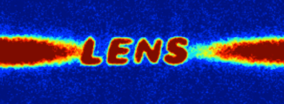 |
We have implemented a new high-resolution imaging system, that also makes it possible to imprint onto the atomic cloud arbitrary optical potentials created with a digital micromirror device (DMD). This will allow us to study quantum transport of fermionic gases in arbitrary geometries -- from the non-interacting limit to the strongly correlated regime, from the clean to the disordered case. An upgrade of the setup for the production of quasi-two-dimensional clouds is now under way, stay tuned! |
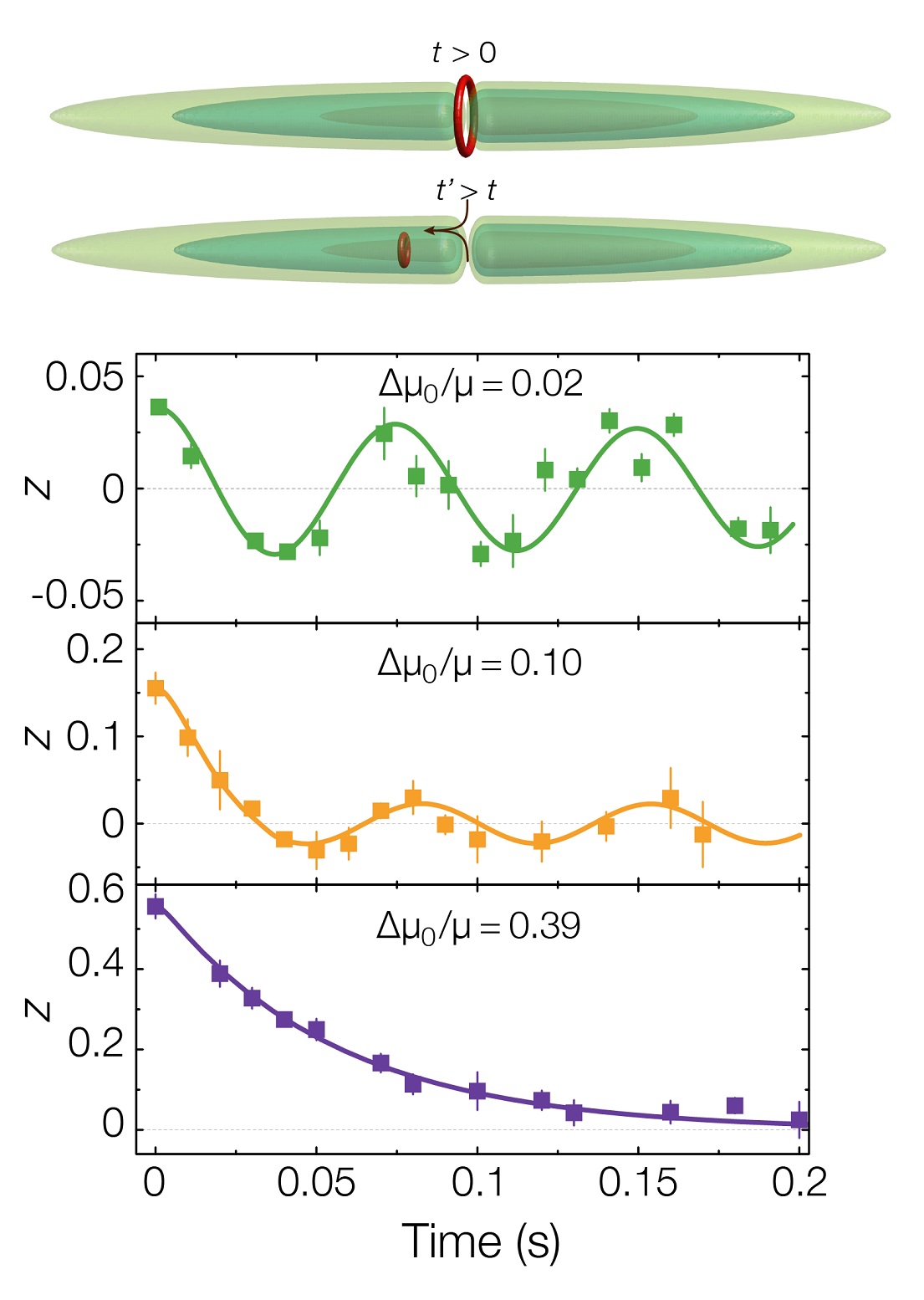 |
We study the emergence of dissipation in an atomic Josephson junction between weakly coupled superfluid Fermi gases. We find that vortex-induced phase slippage is the dominant microscopic source of dissipation across the BEC–BCS crossover. We explore different dynamical regimes by tuning the bias chemical potential between the two superfluid reservoirs. For small excitations, we observe dissipation and phase coherence to coexist, with a resistive current followed by well-defined Josephson oscillations. We link the junction transport properties to the phase-slippage mechanism, finding that vortex nucleation is primarily responsible for the observed trends of the conductance and critical current. For large excitations, we observe the irreversible loss of coherence between the two superfluids, and transport cannot be described only within an uncorrelated phase-slip picture. Our findings open new directions for investigating the interplay between dissipative and superfluid transport in strongly correlated Fermi systems, and general concepts in out-of-equilibrium quantum systems. A. Burchianti, et al., |
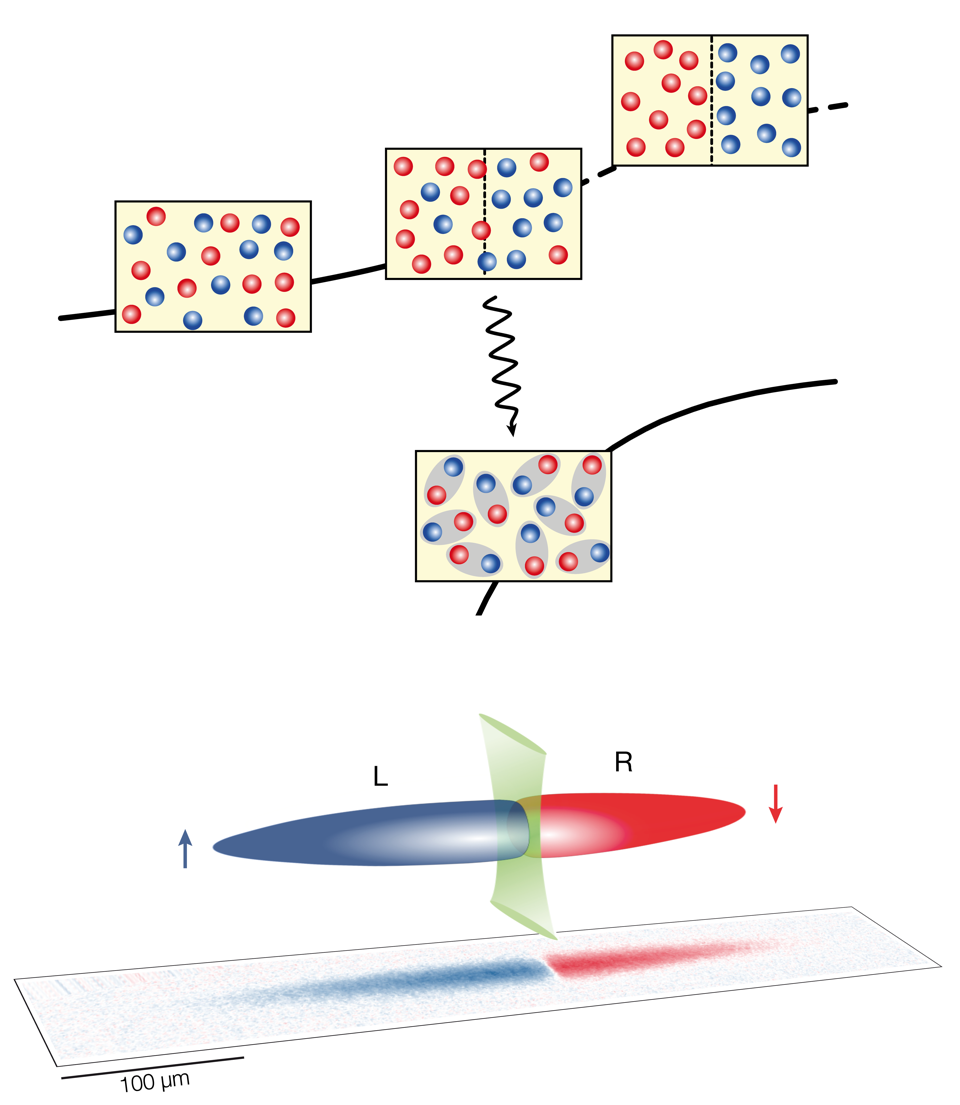 |
We study the collective spin response and spin diffusion of an ultracold lithium Fermi gas artificially engineered in a fully ferromagnetic state, obtained by spatially segregating oppositely-oriented spins into two adjacent reservoirs. In this way, we show that strong repulsive interactions are sufficient to temporarily stabilize ferromagnetic correlations in a Fermi mixture. In particular, we reveal a substantial increase of the magnetic susceptibility of the gas while approaching the critical value of interaction. Correspondingly, we show that above the critical interaction a spin up-down domain wall can persist for a finite time, indicating the metastability of the ferromagnetic state. Such findings point to Stoner-like ferromagnetic instability driven only by short-range repulsion, and are consistent with our recent study of a repulsive Fermi liquid of polarons in strongly polarized Fermi gases. G. Valtolina, et al., |
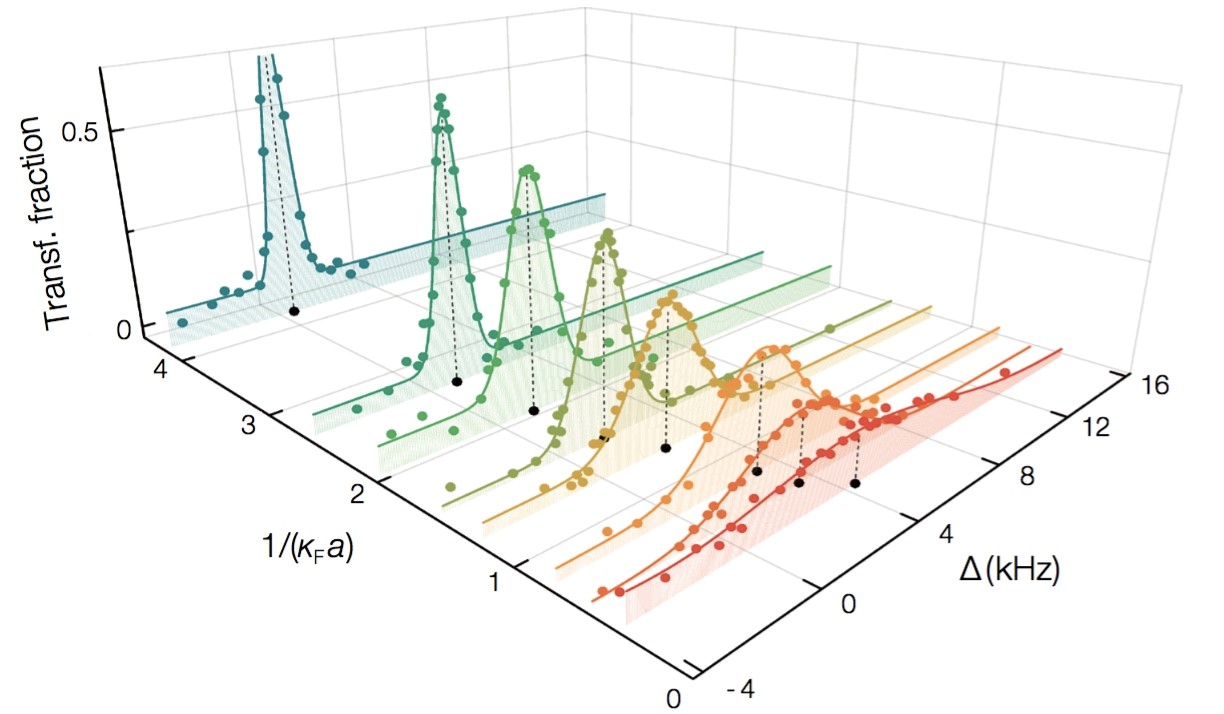 |
Landau was first to suggest that collective excitations of particle ensembles could be treated as if they were particles themselves, with properties like momentum and mass. As such, these excitations are known as quasiparticles, and in contrast to free particles they possess a finite lifetime. In this study, we report on the investigation of a particular type of quasiparticle known as a Fermi polaron. This is a quantum impurity that is immersed in a Fermi sea and strongly interacts with it. In particular, Fermi polarons emerging from impurities repelling the surrounding particles are known as repulsive polarons. We could observe well-defined repulsive polarons even at very strong interactions, with impurities possessing the same mass as the surrounding particles. In such a system the existence of long-lived repulsive polarons was thus far debated. For this, we have spectroscopically probed an ultracold Fermi gas of lithium, where atoms in a specific internal spin state acted the role of the impurities interacting with a bath of atoms in another spin state. Our findings offer exciting prospects for studying many-body states that rely on repulsive interactions. F. Scazza, et al., |
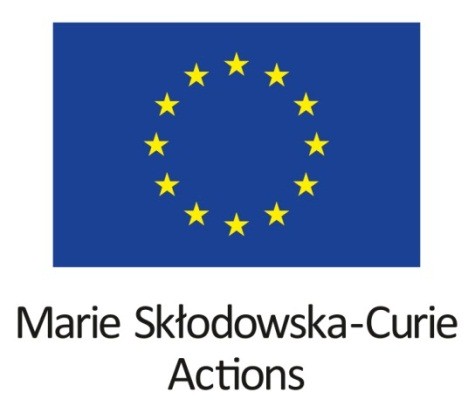 |
Starting today the Lithium Lab will host the new Marie Sklodowska-Curie project SCOUTFermi2D awarded to Francesco Scazza. Congratulations! |
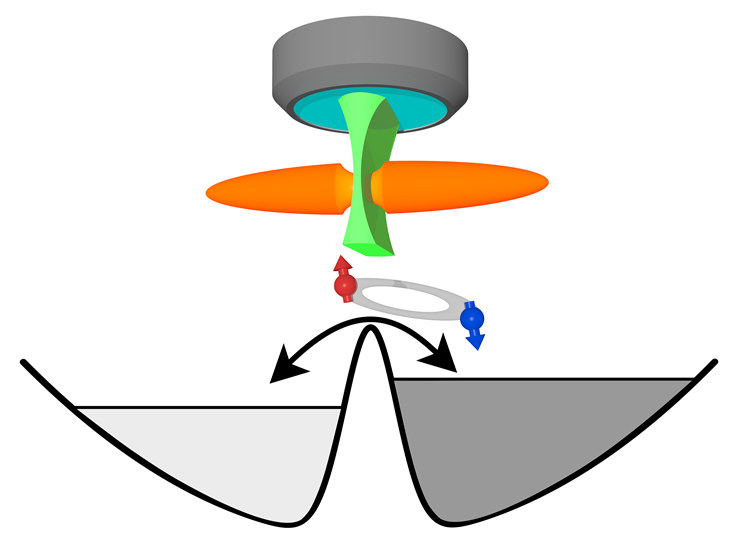 |
Shining a blue detuned thin (2 μm) barrier we produce a double-well potential, which creates a Josephson-like junction for fermionic superfluids. By varying the interactions we investigate the population and phase dynamics between the two wells, observing the Josephson effect across the BEC-BCS crossover. G. Valtolina et al., |
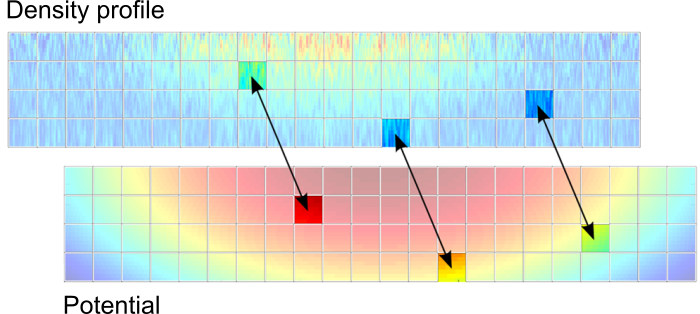 |
Using the inverse Abel transform, the in-situ 3D density profile of a cloud of two-state 6Li atoms trapped in a potential with cylindrical symmetry can be derived. Following [M. Ku et al., Science 335, 563 (2012)] we reconstruct the equation of state of the system. In particular, local pressure and compressibility have been obtained for the unitary Fermi gas, revealing the superfluid transition. |
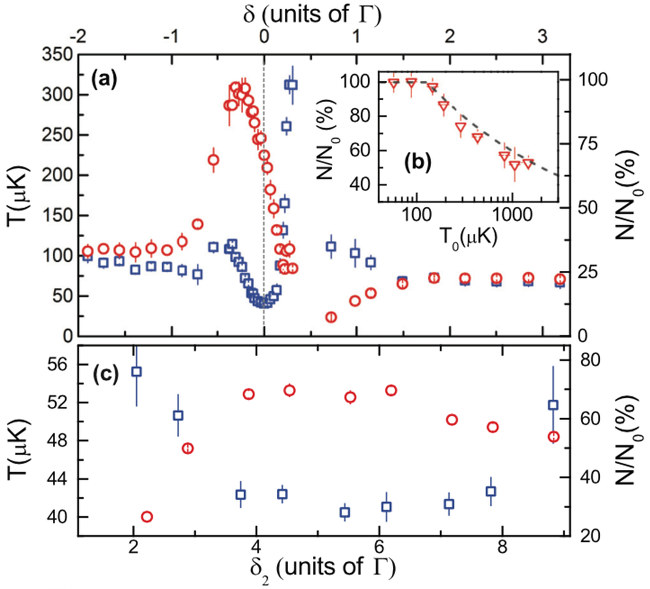 |
The quest to develop new and efficient experimental schemes to produce large and highly degenerate fermionic samples is fundamental in the way of using them to study fermionic superfluidity with a high degree of control on properties as interaction strength and dimensionality. 6Li samples of two spin components offers a broad Feshbach resonance allowing a good tenability of the interactions and the ability to investigate superfluidity across the BEC-BCS crossover. On the other way, standard laser cooling configurations are not efficient due to the lack of sub-Doppler cooling mechanism on the D2 line. We use a gray molasses operating on the D1 atomic transition to produce degenerate quantum gases of 6Li with a large number of atoms. This sub-Doppler cooling phase allows us to lower the initial temperature of 109 atoms from 500 to 40 μK in 2 ms. We observe that D1 cooling remains effective into a high-intensity infrared dipole trap where two-state mixtures are evaporated to reach the degenerate regime. We produce molecular Bose-Einstein condensates of up to 5×105 molecules and weakly interacting degenerate Fermi gases of 7×105 atoms at T/TF A. Burchianti et al. |
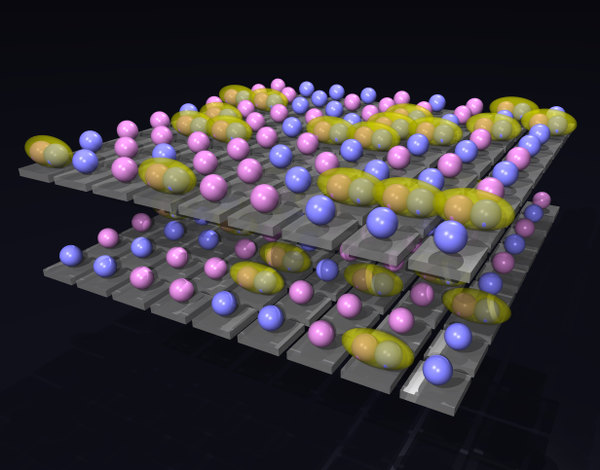 |
We aim at studying two-dimensional fermionic 6Li atoms across the BCS-BEC crossover. We plan to benefit of the recent advances in ultracold atomic systems, such as single-site addressability and the full control of the interparticle interactions. Tailoring arbitrary optical potentials will create the perfect environment for implementing quantum models. In particular, we want to characterize the superfluid phase by studying the interlayer tunneling, discriminating the coherent Josephson dynamics from the single-particle hopping. By adding disorder we will simulate the physics of granular superconductors, testing the robustness of the order parameter and the onset of metallic phases at higher temperatures. |
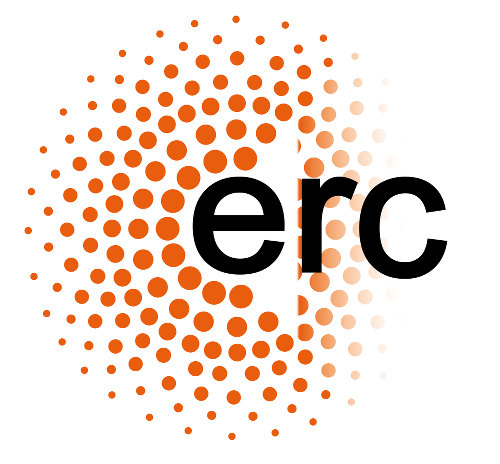 |
The Lithium Lab is funded by ERC Consolidator Grant "QuFerm2D: Quantum Simulation of two-dimensional fermionic systems" awarded in 2012 to Giacomo Roati. |


